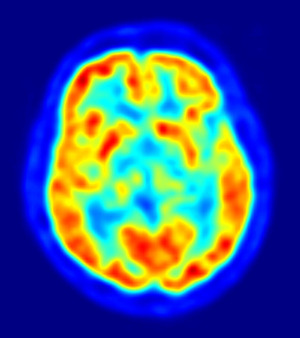by
Brendon Nafziger, DOTmed News Associate Editor | November 01, 2010
While it might not have the poetry of language, laughter and tears, scientists have discovered what they say is another feature unique to humans: the anatomical distributions of an enzyme that makes female hormones in the brain.
Researchers studying new uses for a radiotracer that binds to aromatase, an enzyme essential to the synthesis of estrogen, found by chance that it's concentrated in different brain regions than in other animals, according to an article in the November issue of Synapse.
The researchers hope the work can help them better understand a hormone implicated in pathologies like Alzheimer's disease and breast cancer.



Ad Statistics
Times Displayed: 16169
Times Visited: 33 Final days to save an extra 10% on Imaging, Ultrasound, and Biomed parts web prices.* Unlimited use now through September 30 with code AANIV10 (*certain restrictions apply)
"This started as a simple tool development study and now it's turned out to be much more interesting than that," Anat Biegon, a neurobiolgoist with Brookhaven National Laboratories and lead author of the study, said in prepared remarks. "The question that's raised is what is aromatase doing in these particular brain regions?"
In the study, the researchers took PET scans of six volunteers, three men and three women, after having given them an injection of the radiotracer N-methyl-11C vorozole. The men also got a second scan, after receiving an aromatase inhibitor, to see if the tracer works as advertised. It did - the PET scans showed decreased aromatase concentrations after the men got the inhibitor.
But that wasn't all the researchers found. To their surprise, the researchers said aromatase concentrations appeared densest in the thalamus. In earlier animal studies, concentrations were usually higher in smaller regions, the researchers said, such as the amygdala and preoptic area.
The researchers can't explain the difference, but Biegon said she was doing a follow-up study of 30 patients to see if changes in brain aromatase are linked to age, sex, personality and memory. Later, she hopes to expand the study to include patients with specific diseases.

